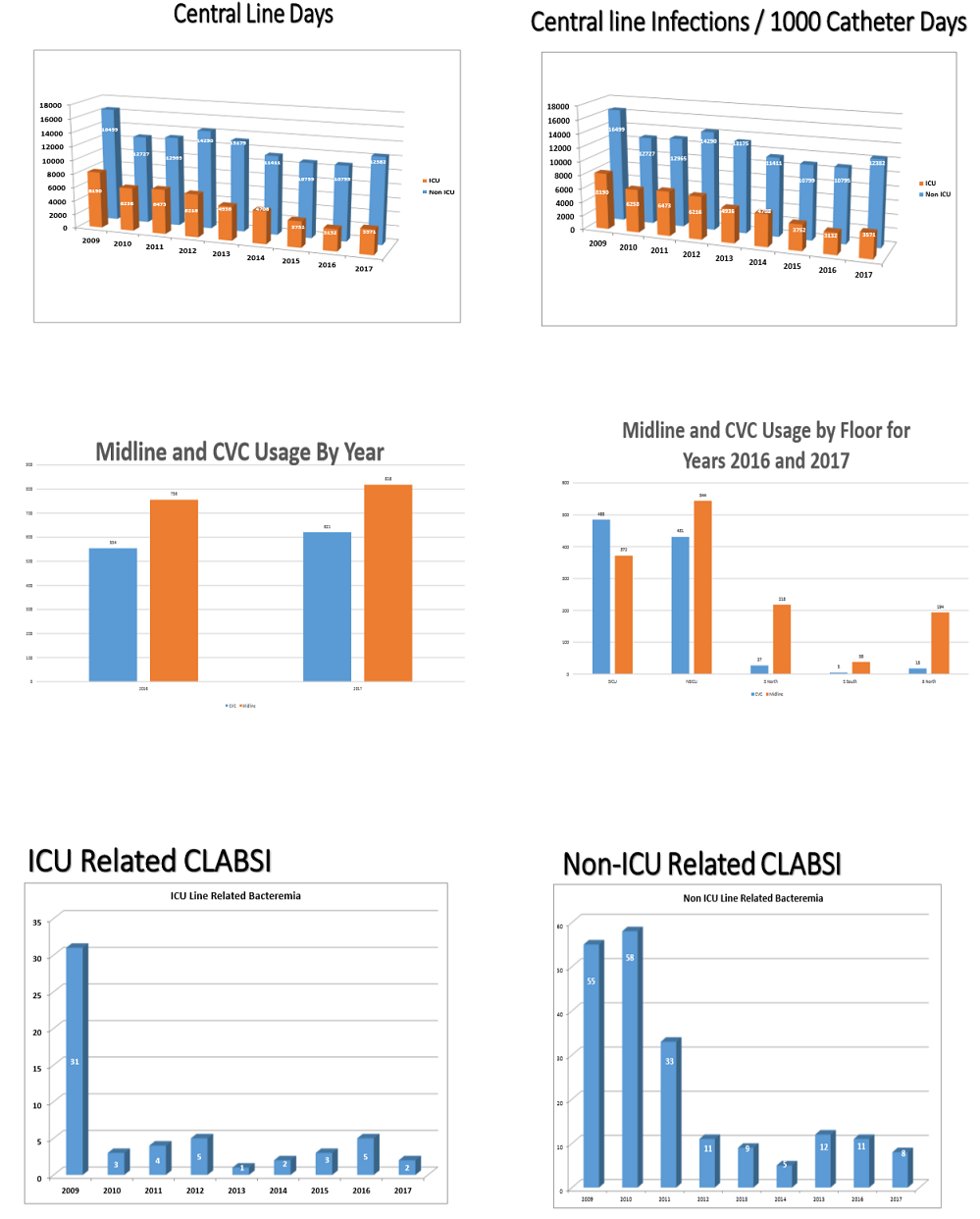X. Shanja-Grabarz1, L. Santoriello1, G. Ritter1, V. Patel1, J. Nicastro1, R. Barrera1 1North Shore University And Long Island Jewish Medical Center,Department Of Surgery/Zucker School Of Medicine At Hofstra/Northwell,Manhasset, NY, USA
Introduction: Central line associated blood stream infections (CLABSI) remain a significant source of morbidity and
increased healthcare costs in patients in ICU’s and other hospital areas. In this study we aimed to show
that by having a midline dedicated team of physician assistants for the placement and monitoring of
midline catheters, the number of central lines placed on medical and surgical wards could be decreased.
Patients with and without CVCs with difficult peripheral access were instead given midline catheters,
decreasing the overall cost of line placement as well as the number of CVC associated complications.
Methods: Data regarding central line days and CLABSI were collected from 2009 to 2017. In that time period, system changes including designated CVC monitoring and midline placment teams were implemented. Data from Jan 2016 through December 2017 pertaining to patients in the SICU, CTICU, NSICU and surgical wards was reviewed, comparing the overall number of CVC and midline catheters placed. Our primary endpoint was decrease in the number of central line days and consequently the number of associated complications in ICU and Non-ICU settings.
Results: Midline catheters were used more often than CVC’s in both years included in the study and in both the ICU and floor setting. There was an appreciable decrease in the number of central-line days and CLABSI that corresponded to various hospital system changes including utilizing a team of trained designated housestaff and PAs to monitor central lines and place midline catheters sterilely in patients with difficult peripheral access.
Conclusion:
Our data show that with the implementation of teams to monitor CVC's and place midline catheters, the number of midline catheters placed increase and patients have fewer central line days and fewer central line associated complications. Staff members that are already proficient in ultrasound guided placement of central lines can easily be taught the placement of midline catheter, as both procedures require a similar skill set. In a patient with difficult IV access, midline catheter placement is a safer and more cost-effective way to provide acess without resorting to unceccesary central line use.
